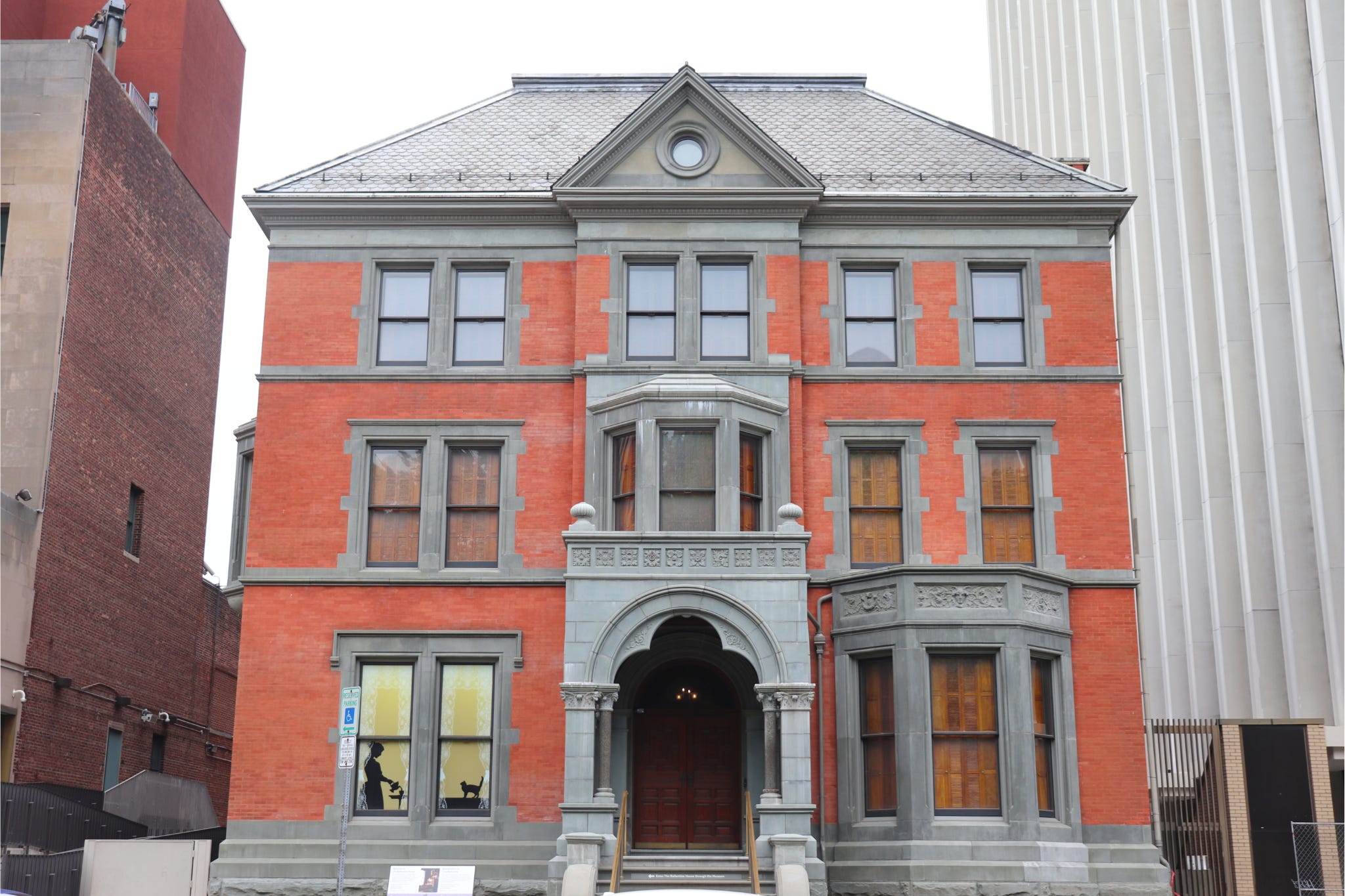
Talia Lakritz/Business Insider
As I walked into Ballantine House, a Gilded Age mansion built in 1885, I was greeted by the soft tinkling of teacups, the crackling sounds of a fireplace, and gentle piano music.
The immersive soundscape is one of many ways that the Newark Museum of Art is ushering the historic mansion into the 21st century.
Ballantine House was once occupied by three generations of the Ballantine family, who earned their fortune as owners of a successful brewery in Newark.
Instead of simply restoring the home’s interiors to look exactly as they did when its wealthy residents lived there, museum curators have taken an expansive approach to highlight underrepresented narratives alongside restoration work.
In July, I visited the museum to tour Ballantine House and experience this merging of the Gilded Age with contemporary Newark. Take a look inside.
Like many wealthy families in the Gilded Age, the Ballantines made their fortune through the period’s rapid industrialization and urbanization.
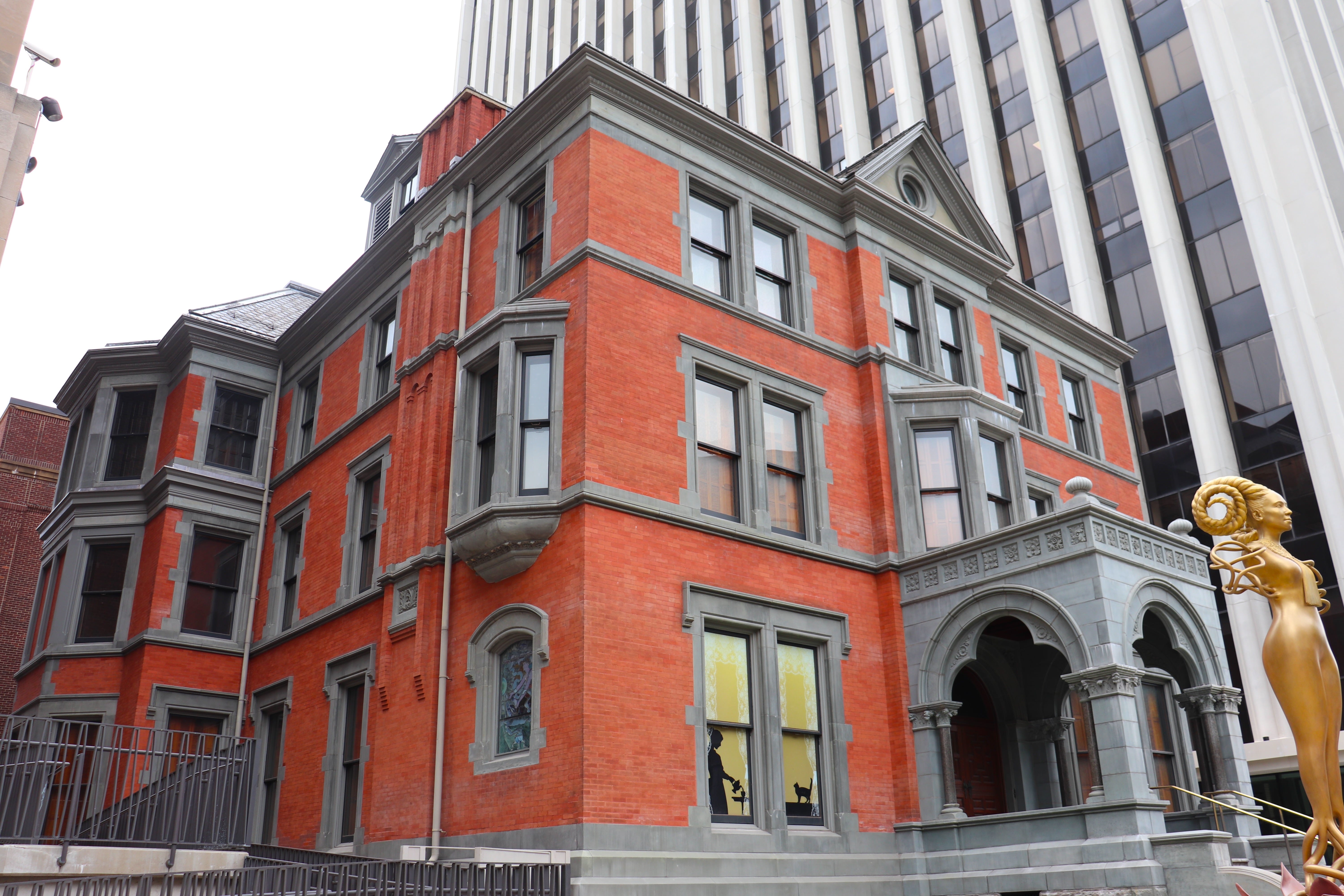
Talia Lakritz/Business Insider
Newark’s supply of fresh water and proximity to New York City made it an ideal location to found a brewery.
Peter Ballantine moved to Newark in 1840 and bought a brewery with a business partner before becoming its sole owner in 1847. By 1913, Ballantine was producing over 500,000 barrels of ale per year. By 1915, the company employed 1,800 people.
With business booming, architect George Edward Harney designed the 27-room, three-story Ballantine House for Peter’s son, John Ballantine, his wife, Jeannette Ballantine, and their family.
The Newark Museum of Art in New Jersey considers Ballantine House the largest object in its collection.
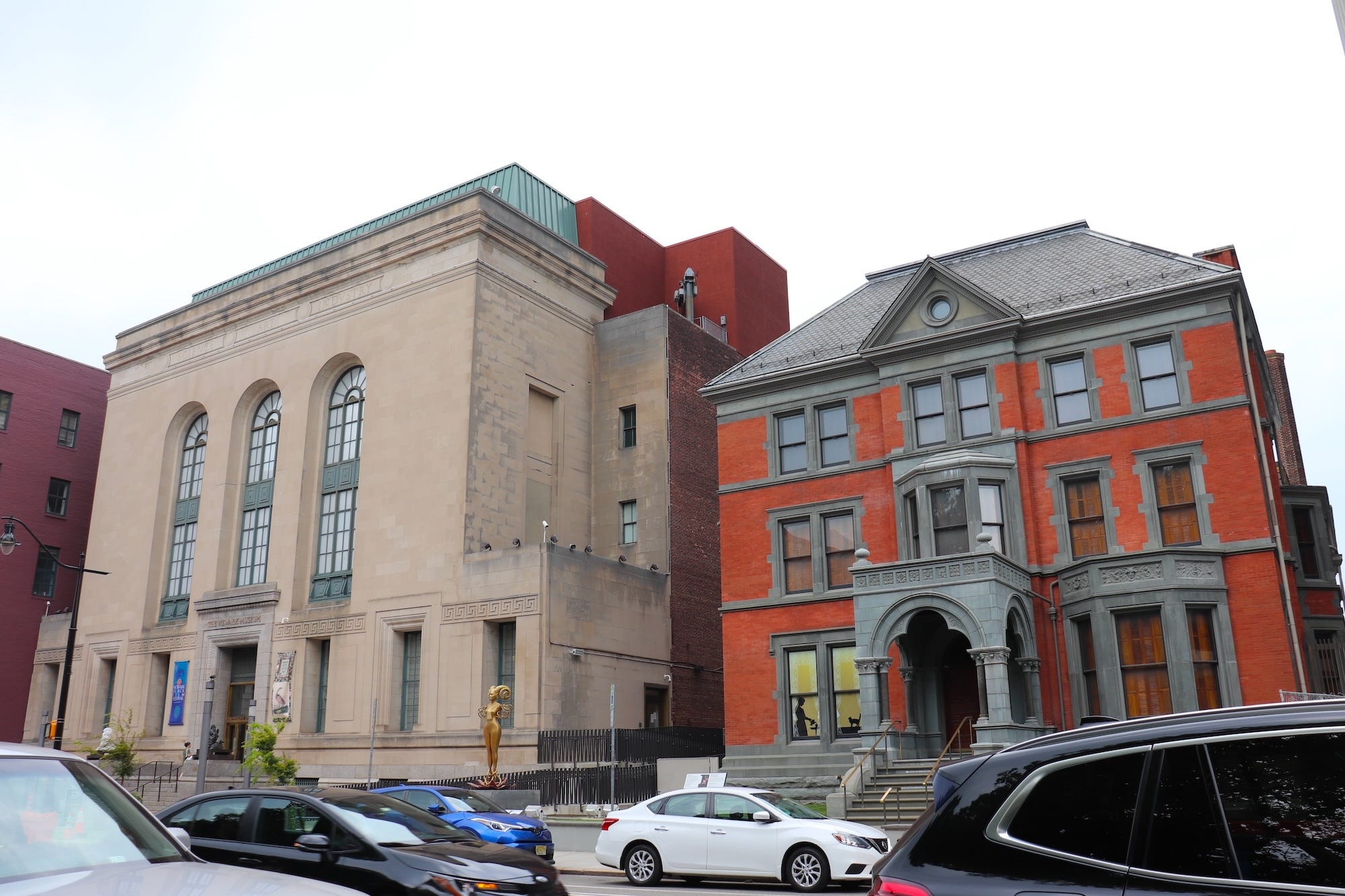
Talia Lakritz/Business Insider
The Newark Museum of Art acquired the home in 1937 and used it as office and gallery space before restoring two of its three floors and opening them to the public.
In 2023, Ballantine House reopened after a two-year, $12 million renovation. With additions such as contemporary art, interactive exhibits, and realistic soundscapes, the museum aims to preserve the historical setting while updating the home to better reflect the city’s modern, diverse population.
“We wanted to bring in different stories,” Amy Simon Hopwood, the museum’s associate curator of decorative arts, told Business Insider.
Admission to the museum costs $10 for adult non-members.
Ballantine House tours begin in a room that was originally the kitchen.
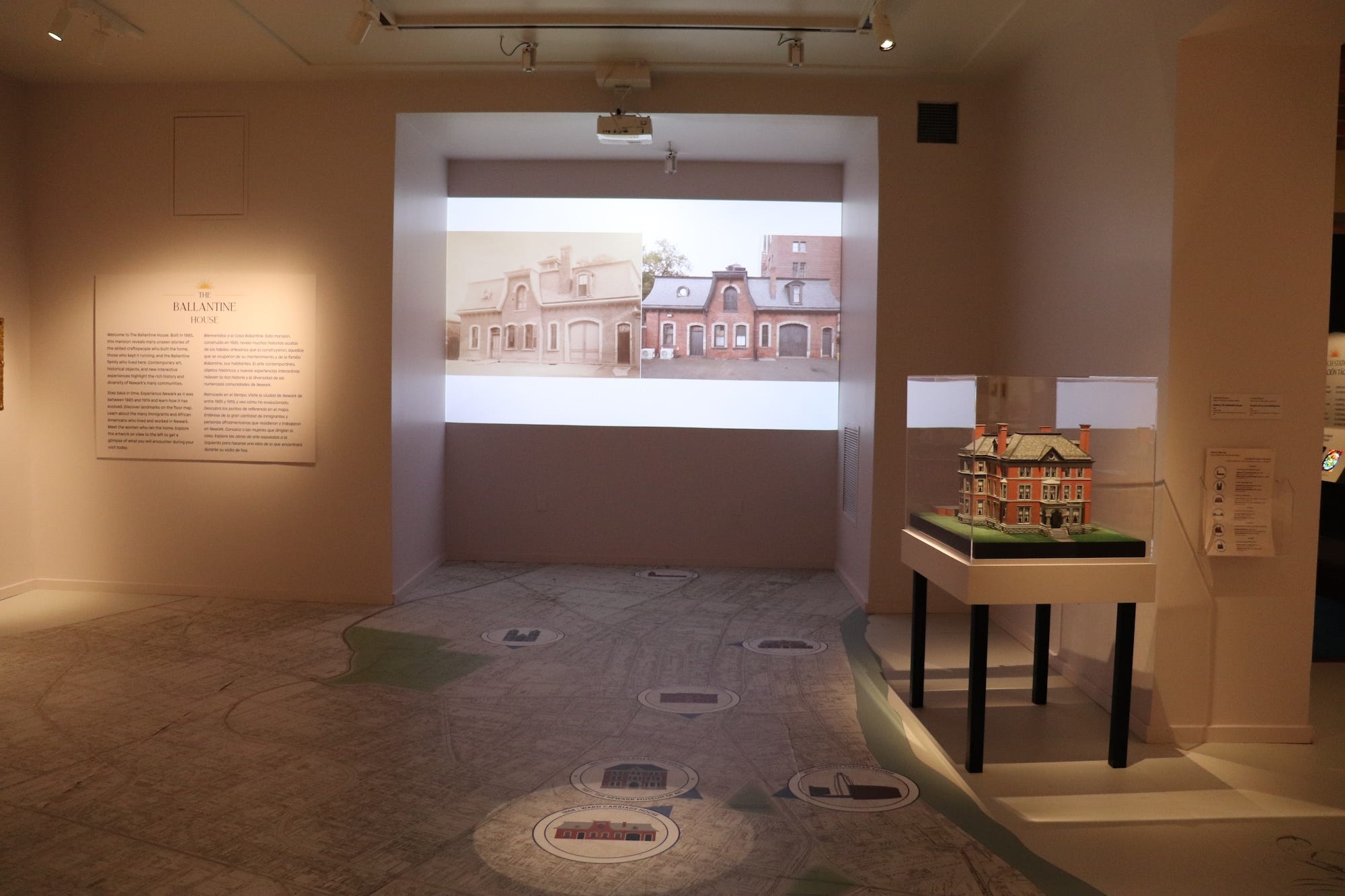
Talia Lakritz/Business Insider
Today, it is known as the Orientation Gallery. The floor features a map of Newark with notable sites highlighted in circular decals.
“People who live in or know Newark can see familiar things, and newcomers can really get a sense of the history and the breadth of Newark itself and where the Ballantine House is within the city,” Hopwood said.
A touch station at the entrance to the house encourages visitors to feel reproductions of unique surfaces located throughout.
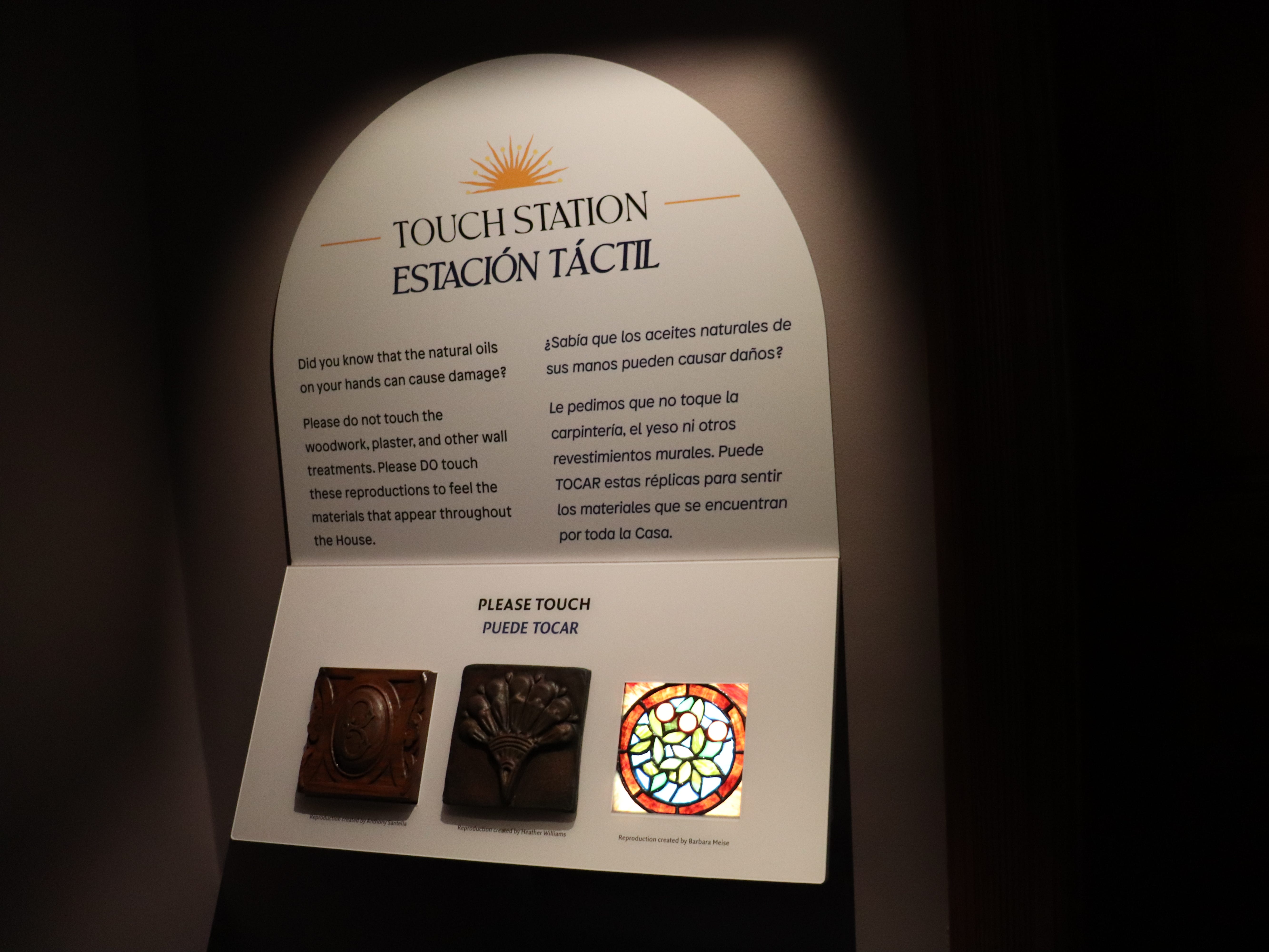
Talia Lakritz/Business Insider
New Jersey-based artists created reproductions of decorative fireplace carvings, stamped plaster walls, and stained-glass windows to help visitors resist the urge to touch the real artifacts.
The home’s architecture and decor contained Renaissance Revival, Georgian, and Palladian influences.
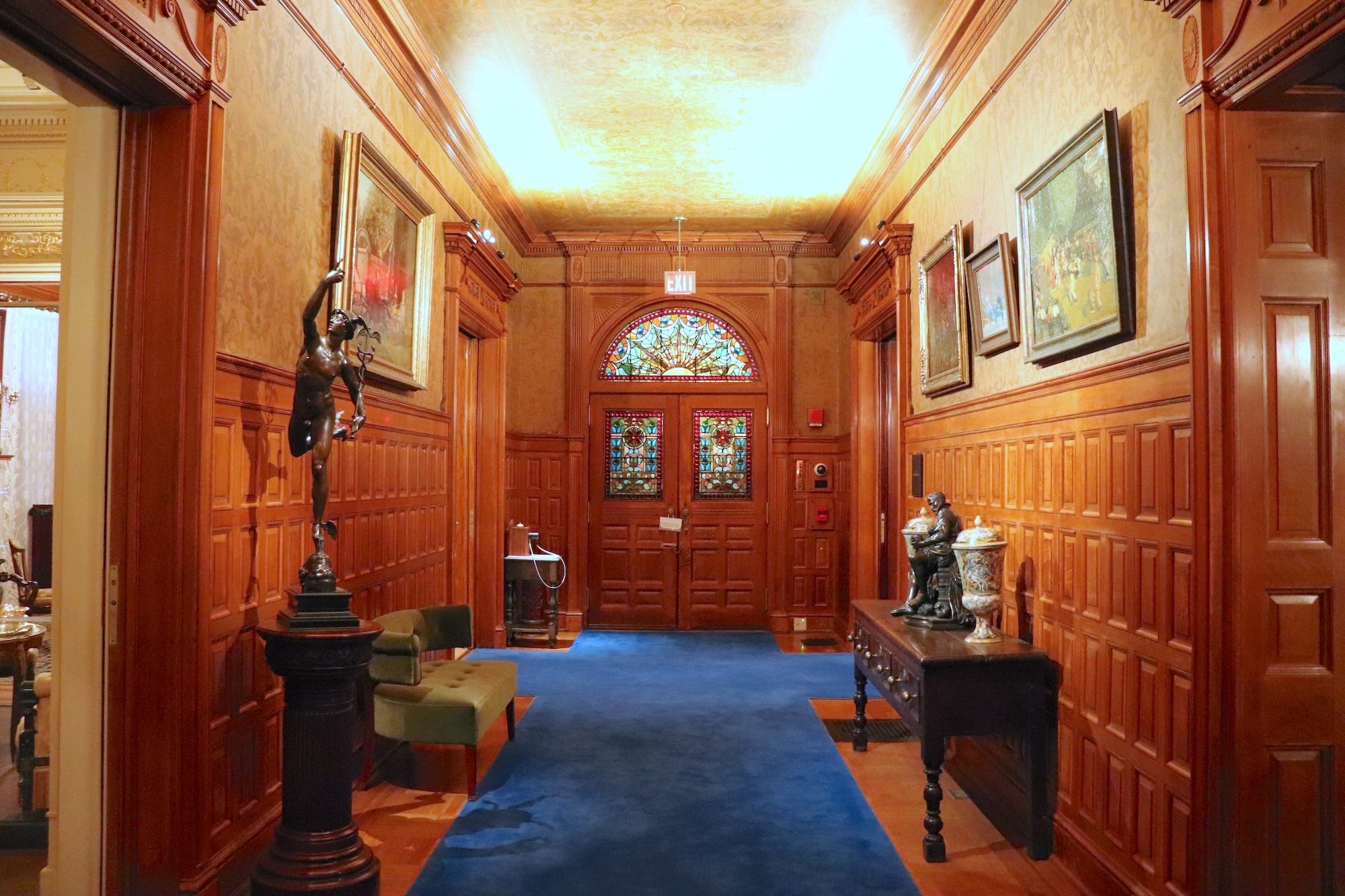
Talia Lakritz/Business Insider
The entrance hall featured oak wood paneling by the woodworking company Kirk & Jacobus. The stained-glass window above the front door depicted a rising sun.
Updated paintings in the entrance hall are part of the museum’s strategy to “bring Newark into the house,” Hopwood said.

Talia Lakritz/Business Insider
The artwork on display highlights downtown scenes and the African-American community that was present in Newark during the Gilded Age and continues to make up 47% of the city’s residents, according to US census data.
“Responding to an Alarm,” dated between 1871 and 1881 by an unknown artist, depicts Lorenzo Dowd Trent, a prominent Black driver who worked for Newark’s fire chief.
“Previously, there were European and British paintings in the hall, but we wanted to really show the different communities of Newark,” Hopwood said.
During the Gilded Age, guests who came in through the front door were welcomed into the reception room.

Talia Lakritz/Business Insider
Guests could leave their calling cards on a tray to request a visit if the family wasn’t home.
The vases on the mantle remain in the same spot where they were displayed while the Ballantines lived there.
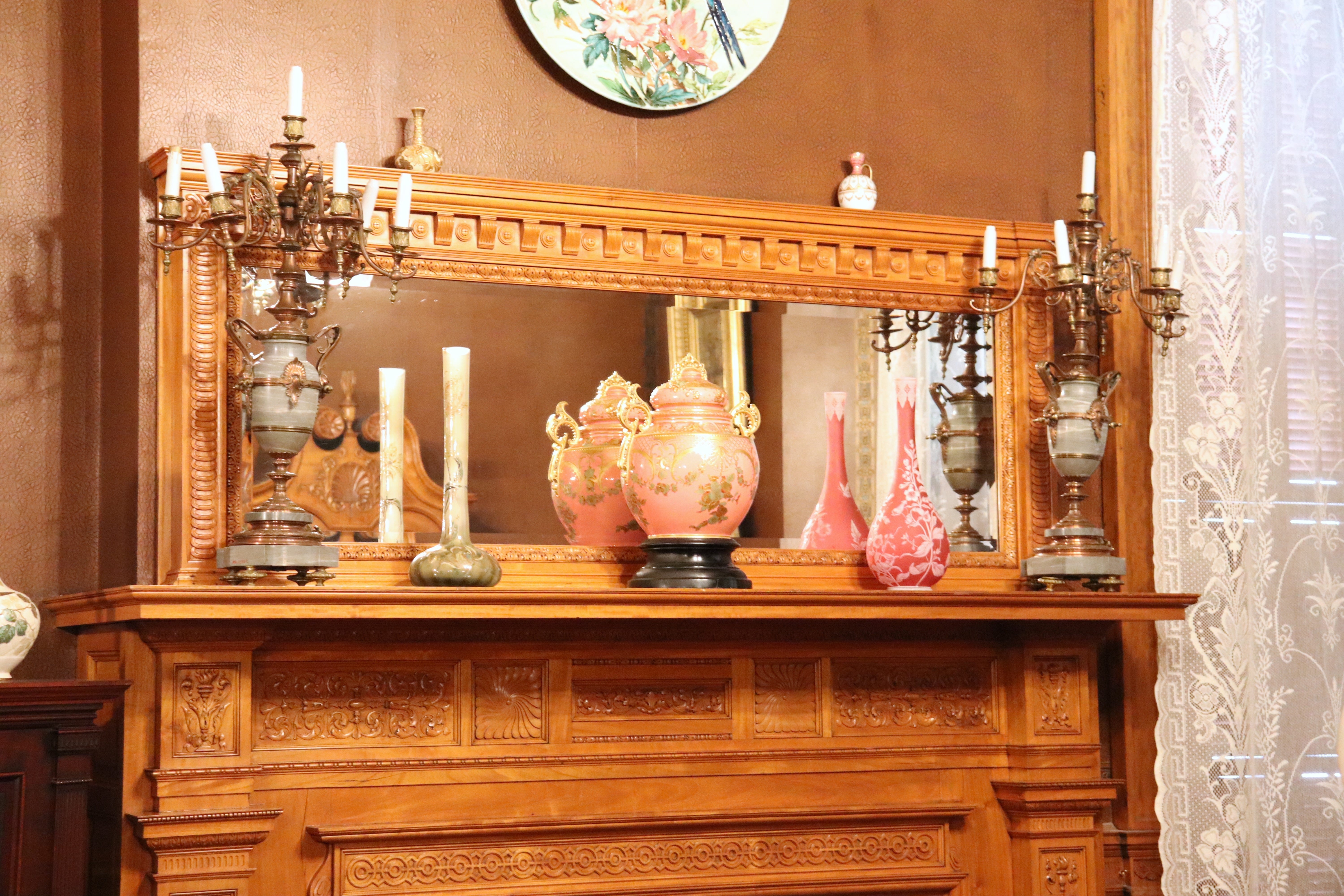
Talia Lakritz/Business Insider
An 1885 photograph of the room also shows that the room had a piano.
The museum added furniture highlighting African-American history alongside the history of the Ballantines, an approach Hopwood described as “paralleling.”
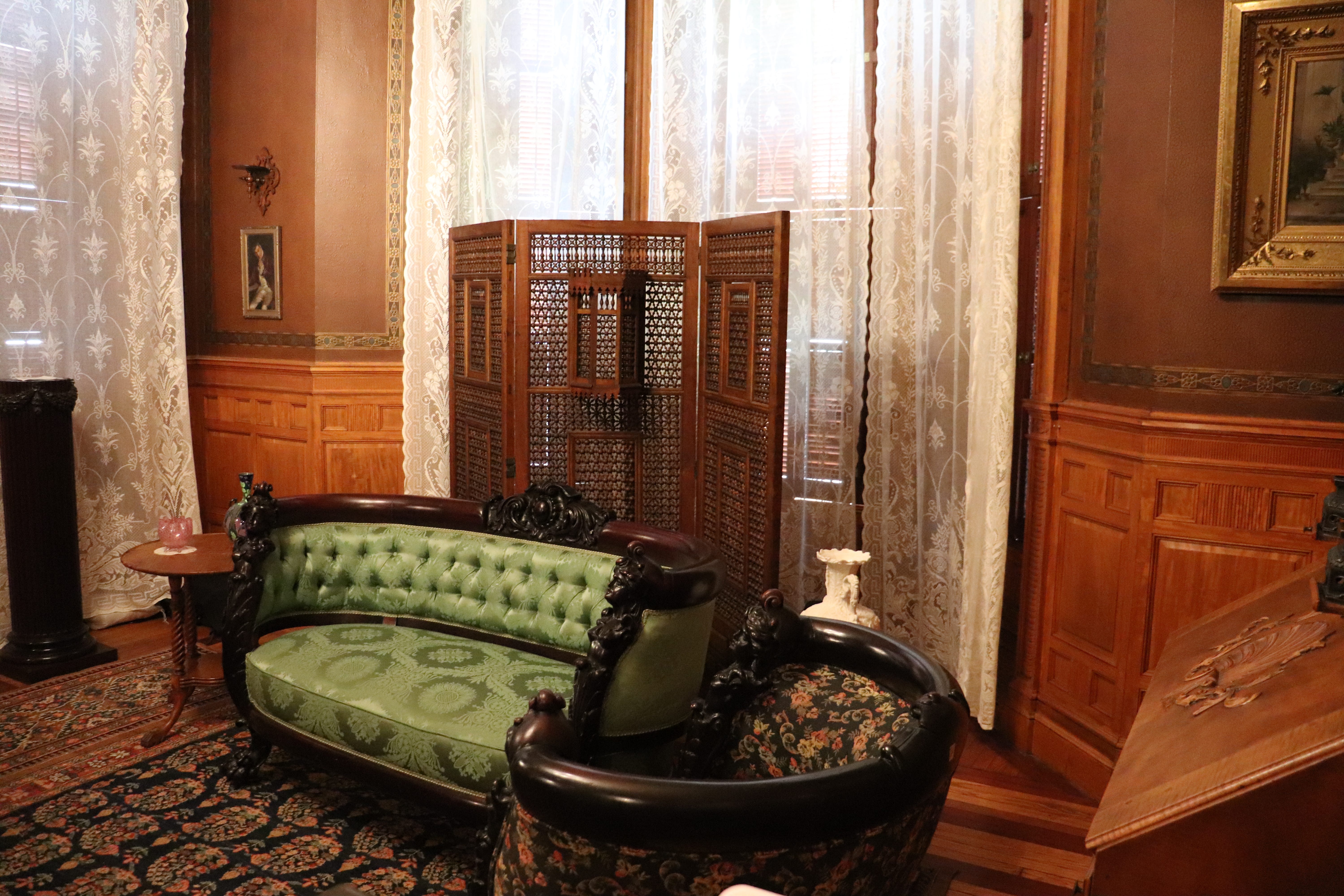
Talia Lakritz/Business Insider
The green sofa and armchair were heirloom pieces belonging to the Herberts, a middle-class Black couple from the early 1900s.
The folding screen behind the sofa was donated by the Ballantines’ daughter, Alice Ballantine Young, who purchased it on a trip to Spain.
The reception room led into the parlor, which served as a formal room for entertaining.
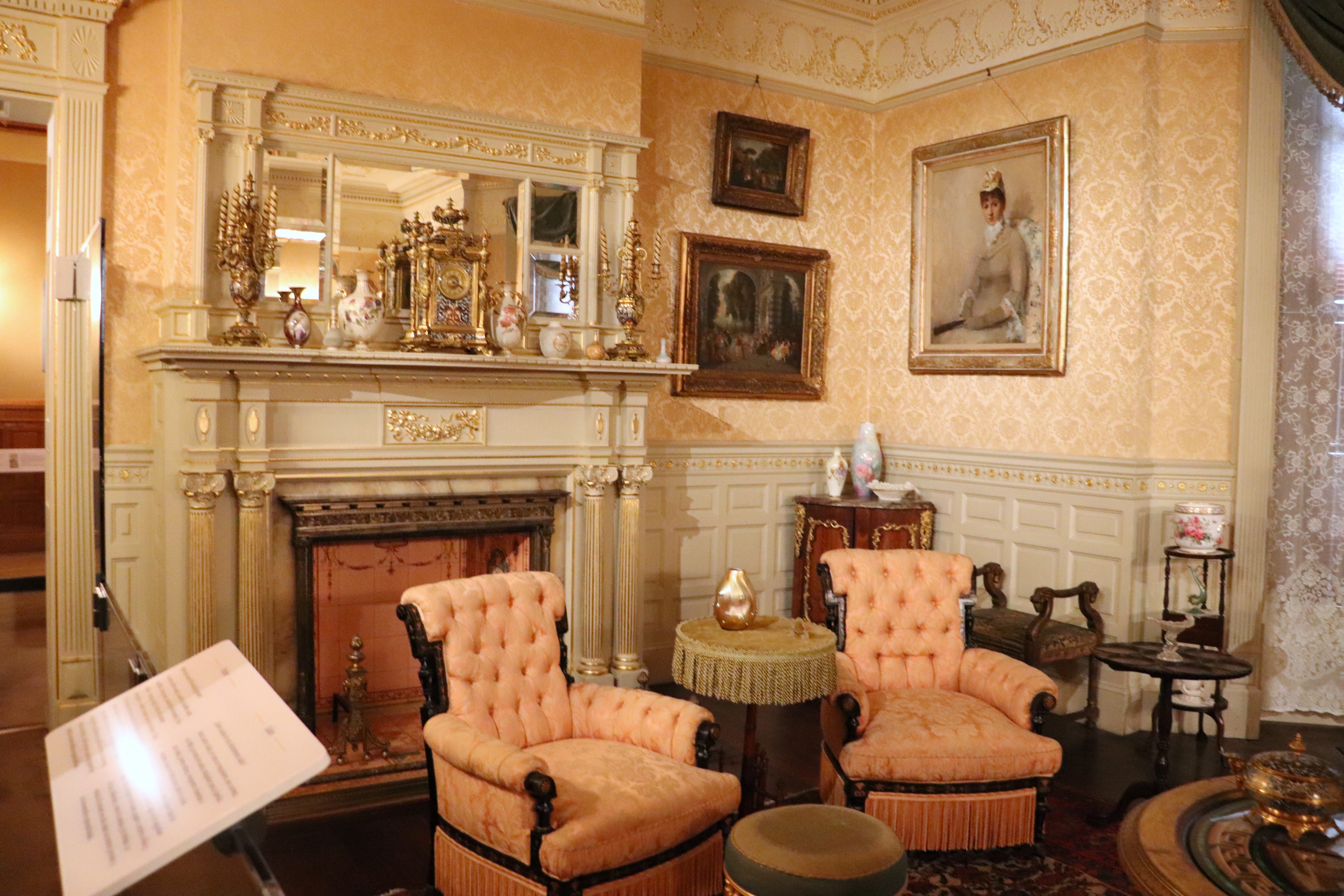
Talia Lakritz/Business Insider
The Renaissance-style fireplace mantle featured gilded gold detailing and tiles inspired by 16th-century Italian influences.
The museum displayed a silver coffee and tea set from Tiffany & Co. and invited visitors to think about the maids who kept it gleaming.
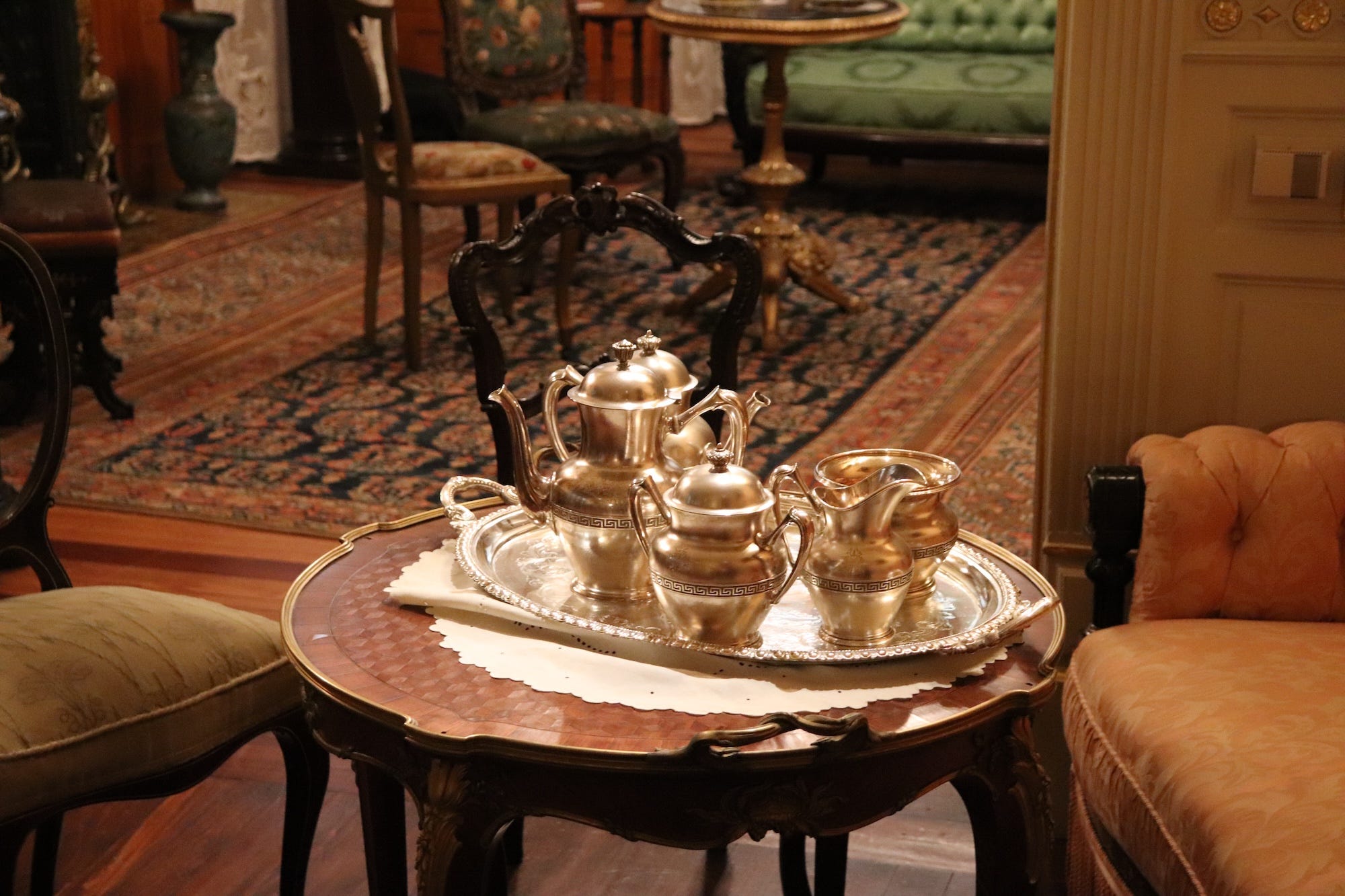
Talia Lakritz/Business Insider
Silver requires constant polishing since air causes the surface to tarnish.
The soundscape playing in the billiard room was especially noticeable, portraying billiard balls knocking together and rolling across the table.
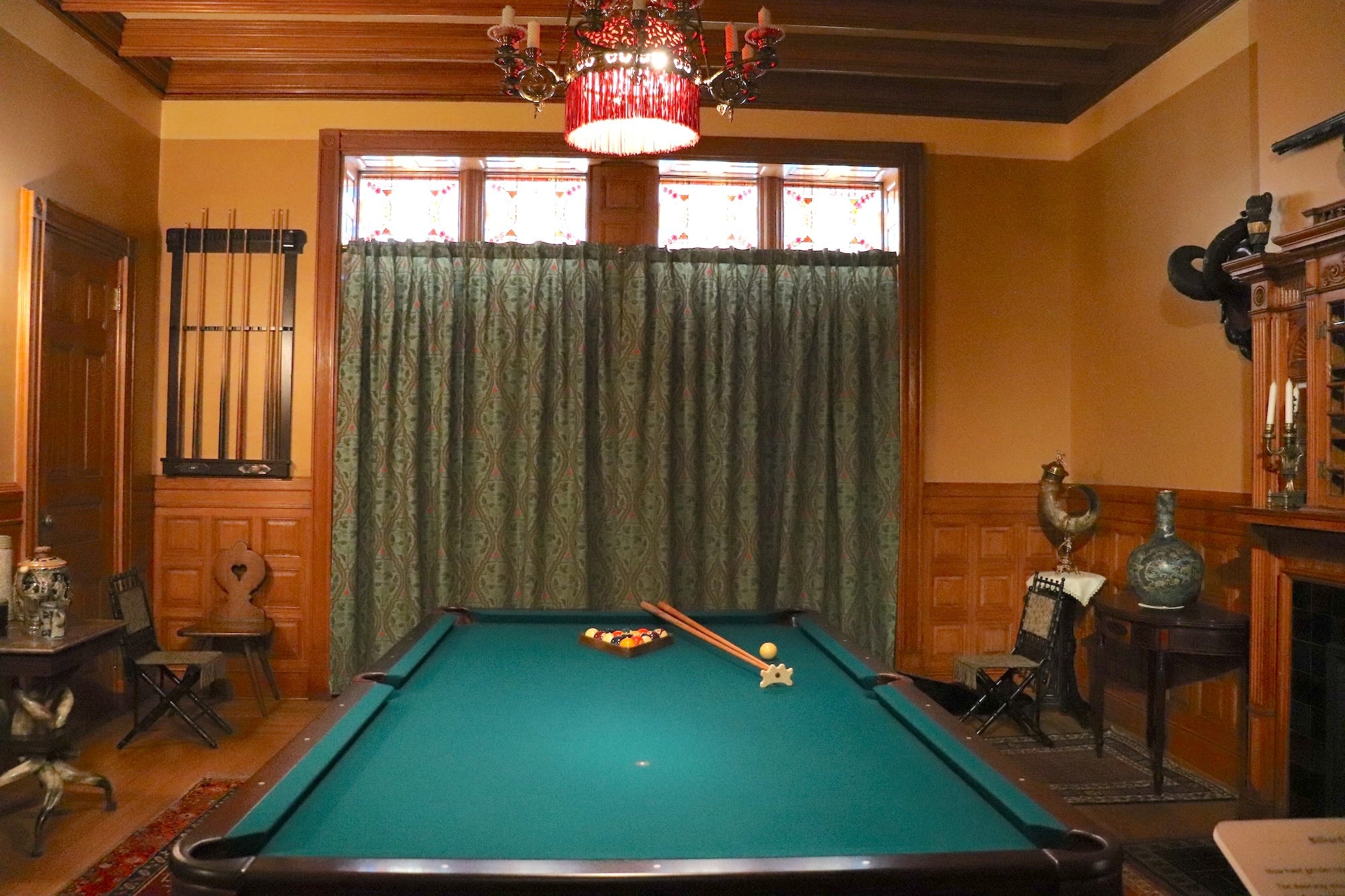
Talia Lakritz/Business Insider
This room was a male-only space until Jeannette Ballantine added a door connecting it to the neighboring parlor in 1891.
The museum added photos of young Black women on either side of a portrait of the Ballantines’ daughter, Alice Ballantine Young.
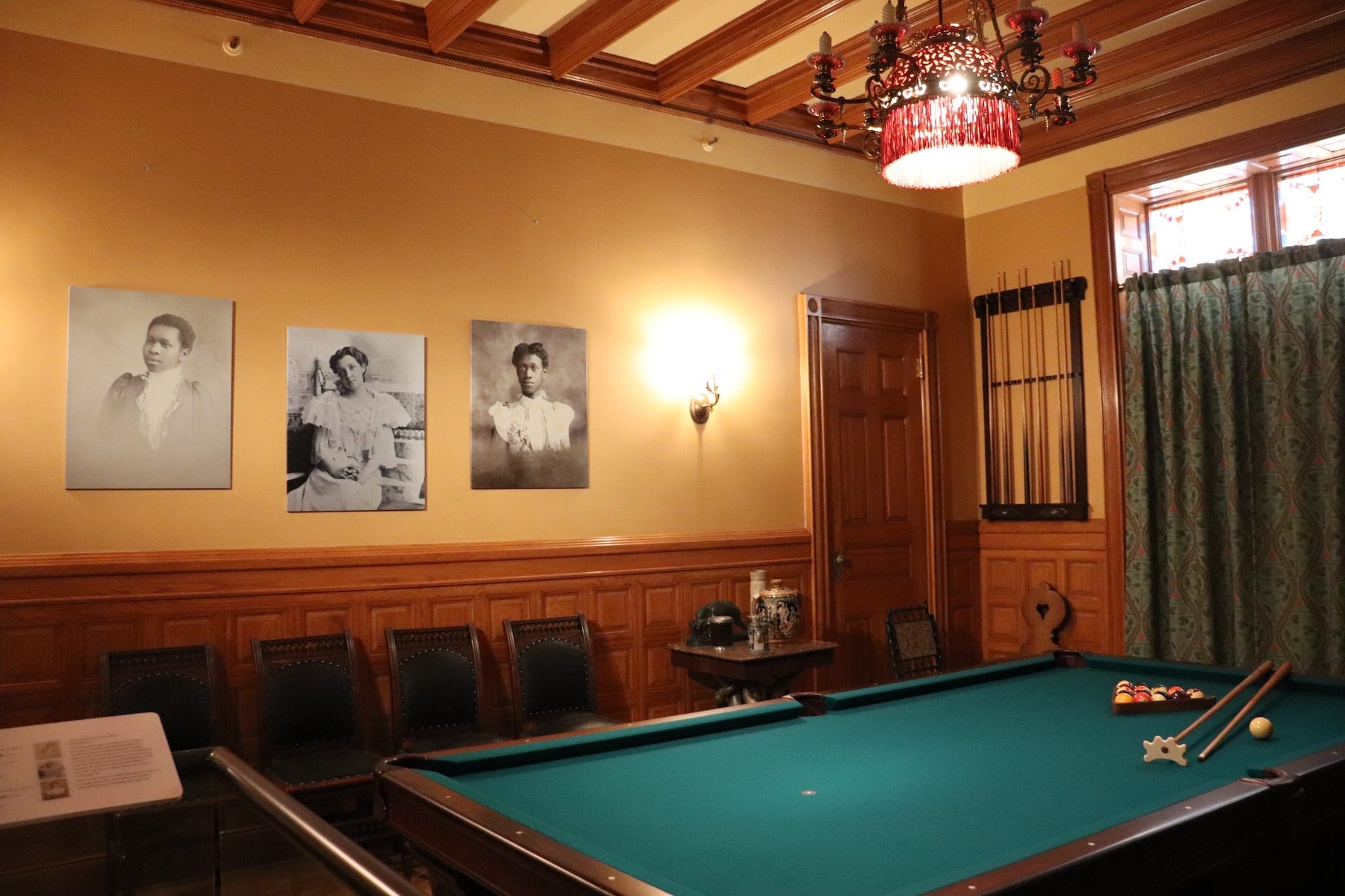
Talia Lakritz/Business Insider
A placard explained that the identities of the women remain unknown, but that they would have “aspired to the same activities, fashions, and education as Alice” despite the period’s widespread racism and segregation.
John Ballantine used the library as his private study when he wasn’t working in his office.
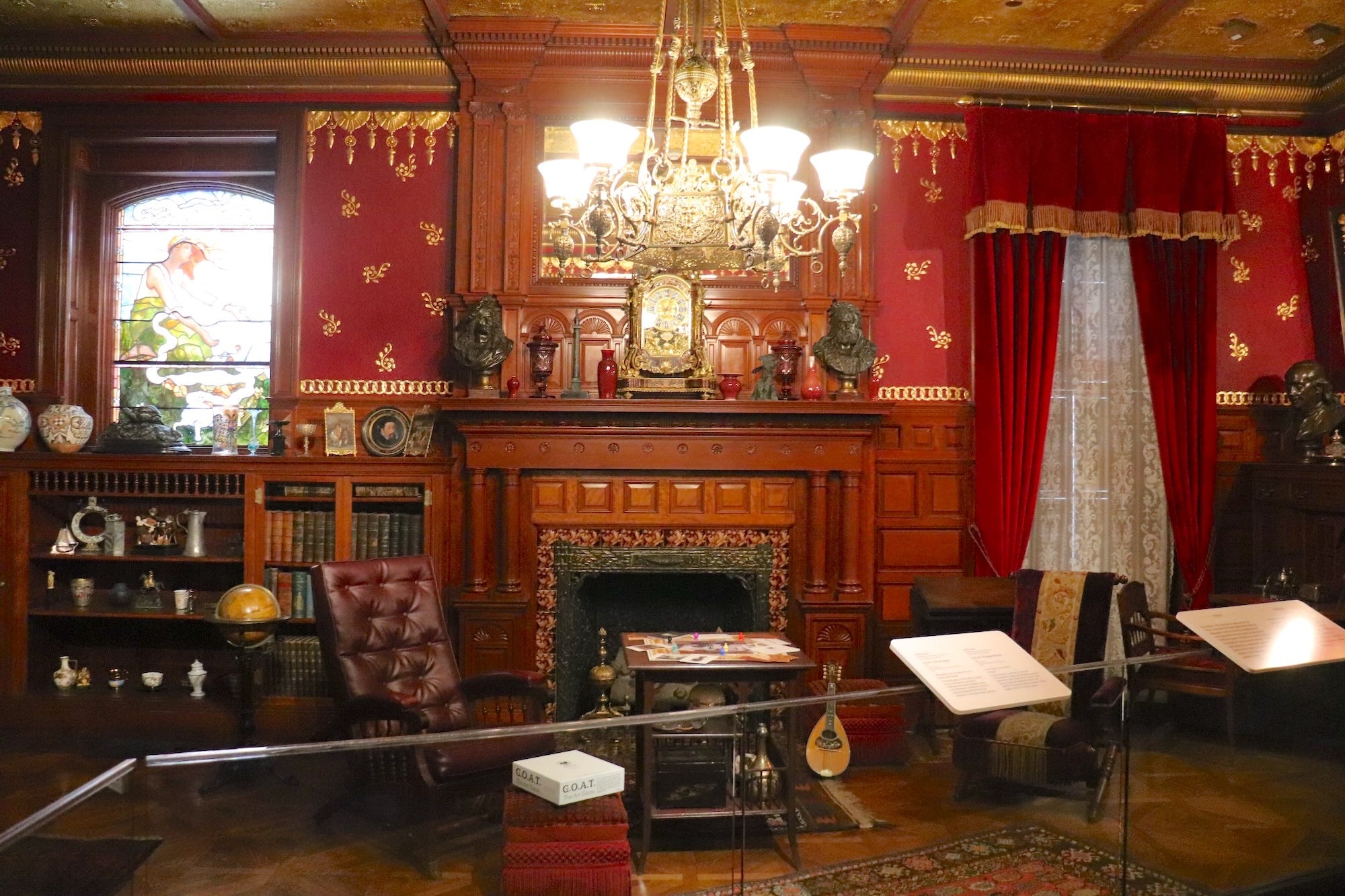
Talia Lakritz/Business Insider
The room may also have been used as an informal family space.
The plaster walls were decorated with embellishments covered in real gold paint.
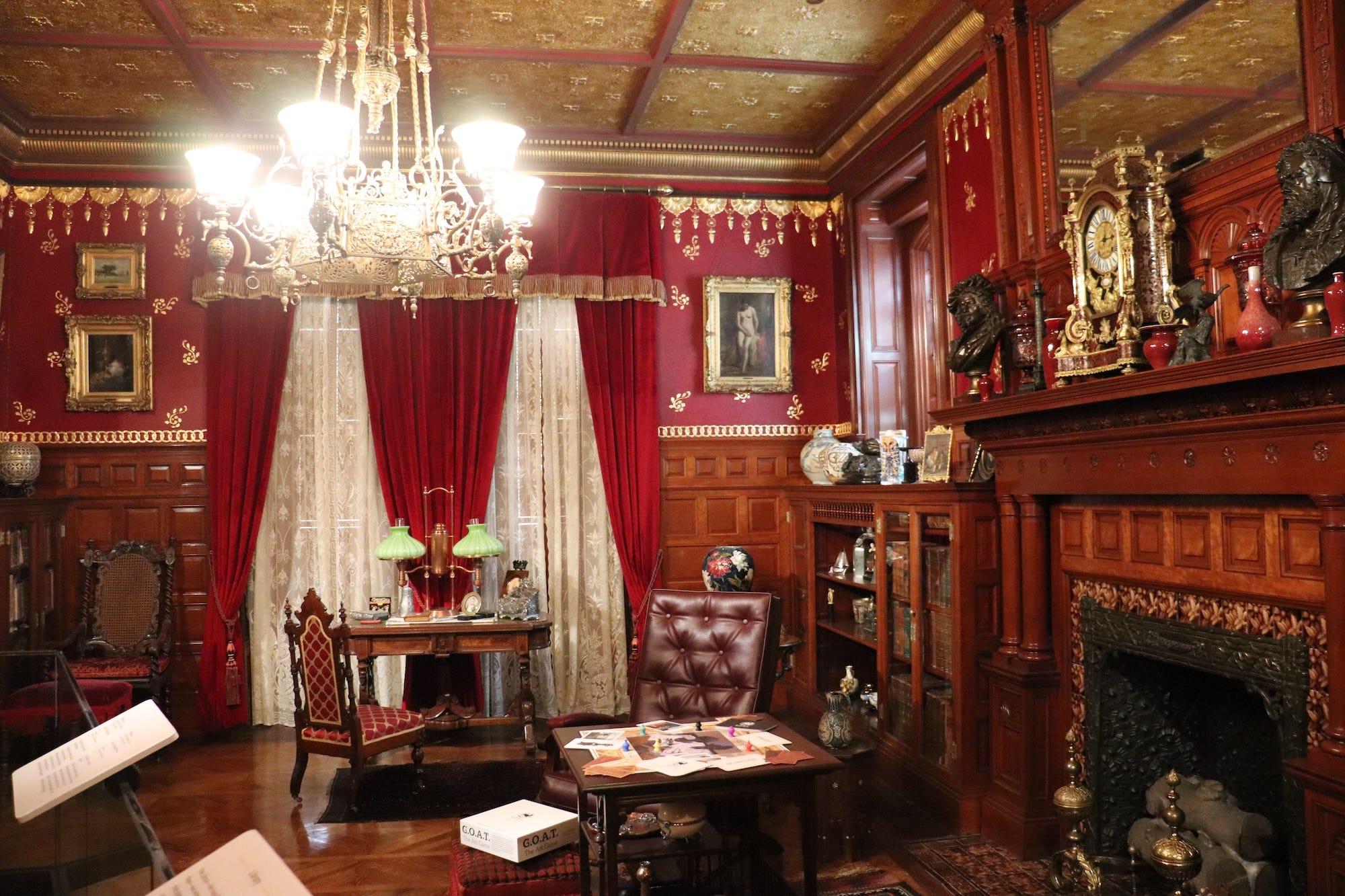
Talia Lakritz/Business Insider
The museum commissioned curtains from a local Newark drapery for the exhibit.
The dining room featured the most striking display of contemporary art I’ve ever seen in a Gilded Age mansion: Yinka Shonibare’s “Party Time: Reimagine America.”
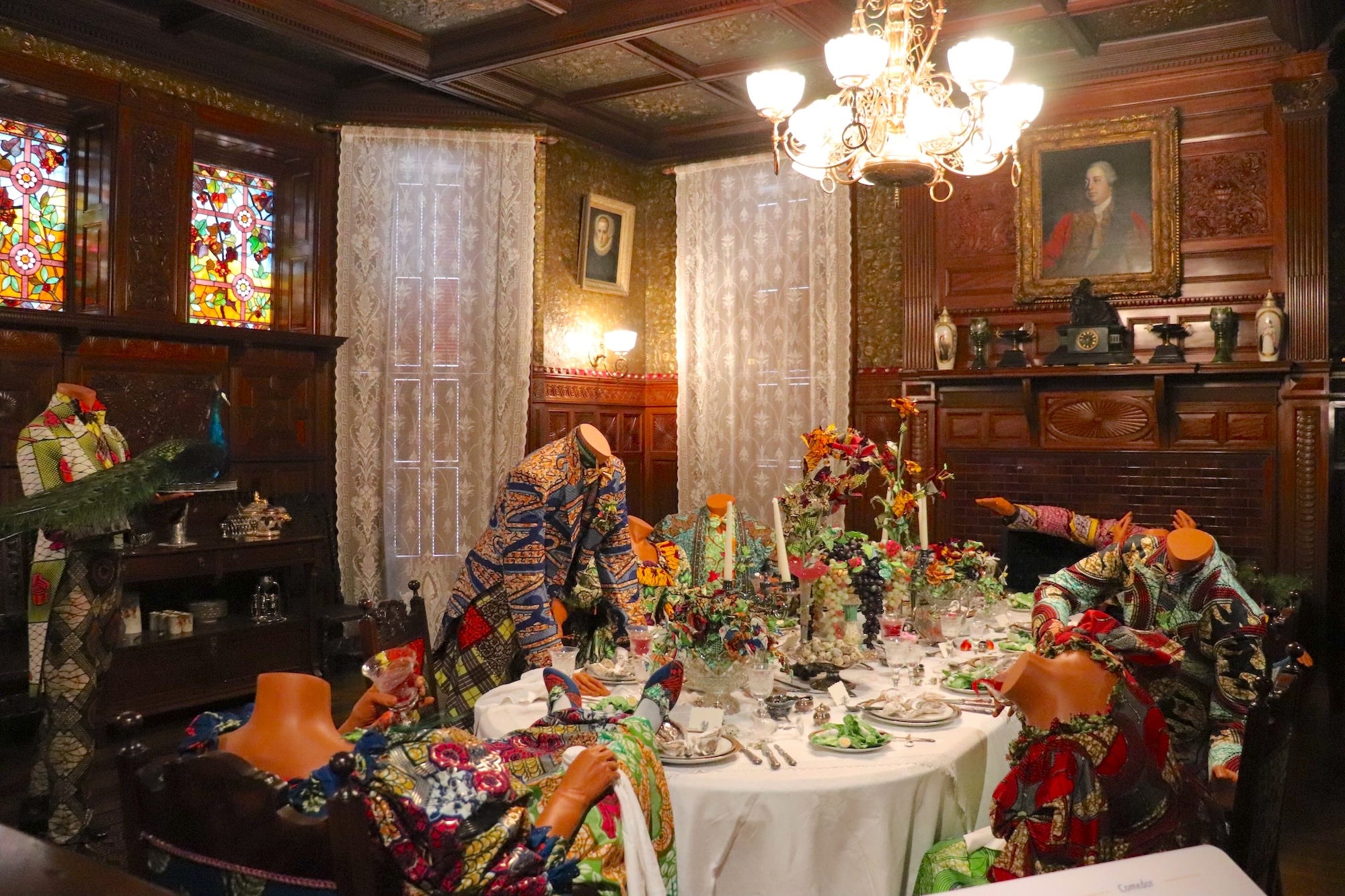
Talia Lakritz/Business Insider
Shonibare, a Nigerian-British artist, dressed eight headless figures in 19th-century clothing made from Dutch wax cloth, a West African fabric. He then staged them around the Ballantines’ table in poses that flout Victorian etiquette — one figure has its feet on the table, others have dropped their forks and spilled their wine — to symbolize celebration and comfort in a place where African-Americans would not have been welcome during the Gilded Age.
The original embossed wallpaper, mahogany woodwork, and stained-glass windows created the perfect setting for the site-specific art installation.
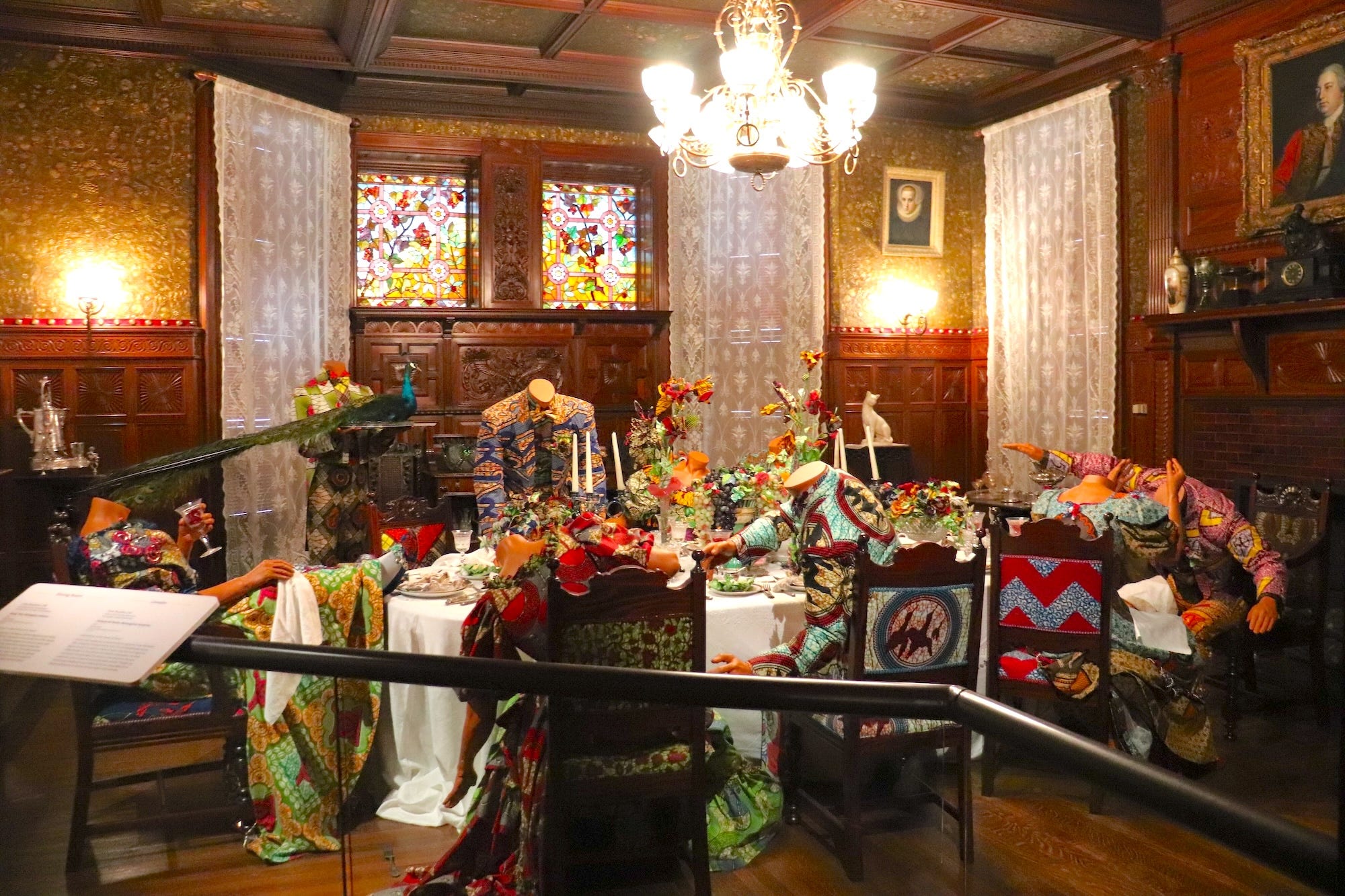
Talia Lakritz/Business Insider
The wallpaper was designed to look like antique Japanese leather, but it was actually paper made out of solidified linseed oil. Known as Lincrusta-Walton, the durable wall decor was named for its inventor, Frederick Walton, who created it in 1877.
Another stunning art piece was the original stained-glass window on the stair landing.
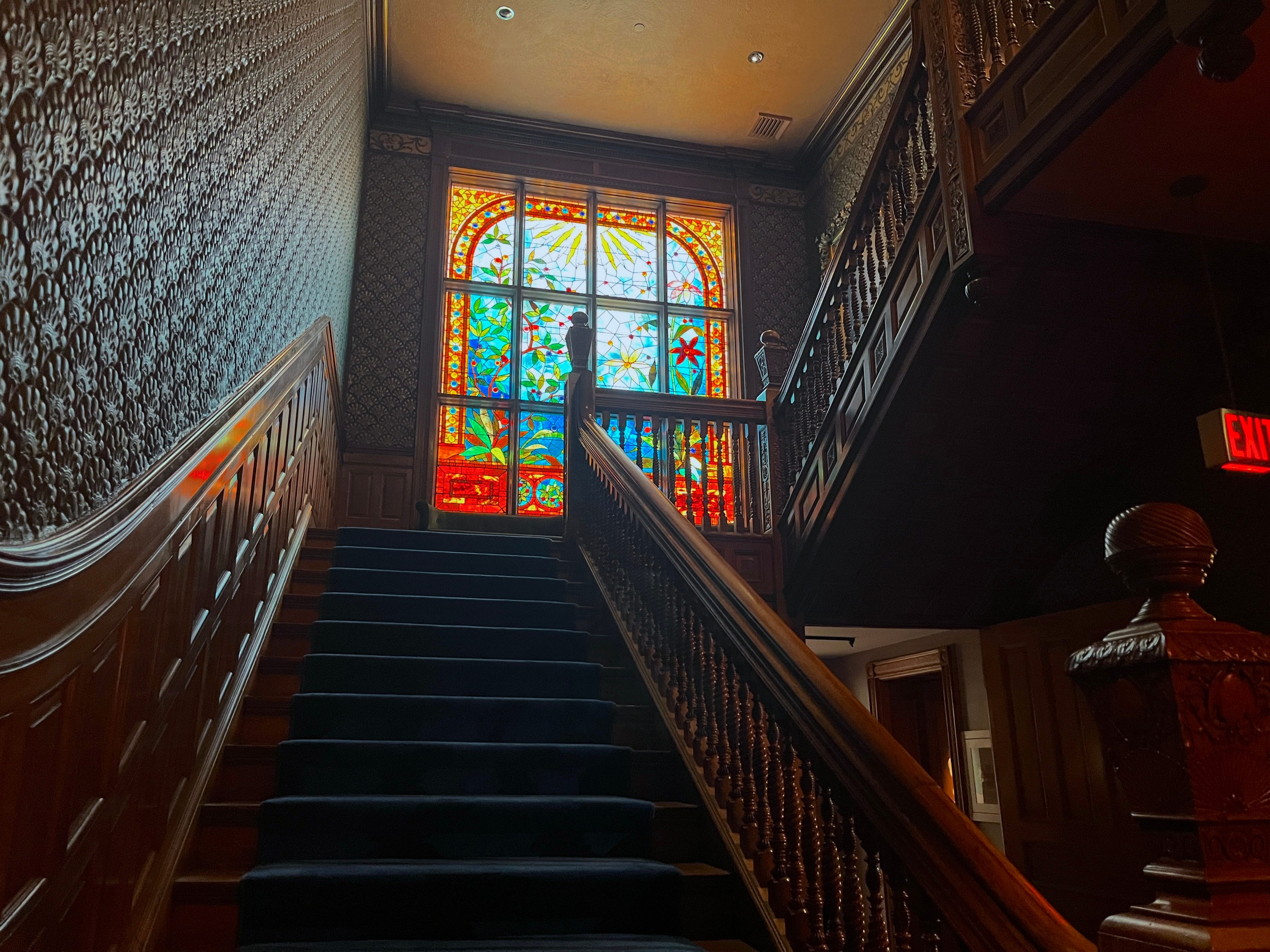
Talia Lakritz/Business Insider
The Ballantines paid around $592 for the window in 1885, which they ordered from D.S. Hess & Co. That’s just under $20,000 when adjusted for inflation in 2025.
Alice Ballantine Young’s room featured a window seat with a view out into Newark’s Washington Park.
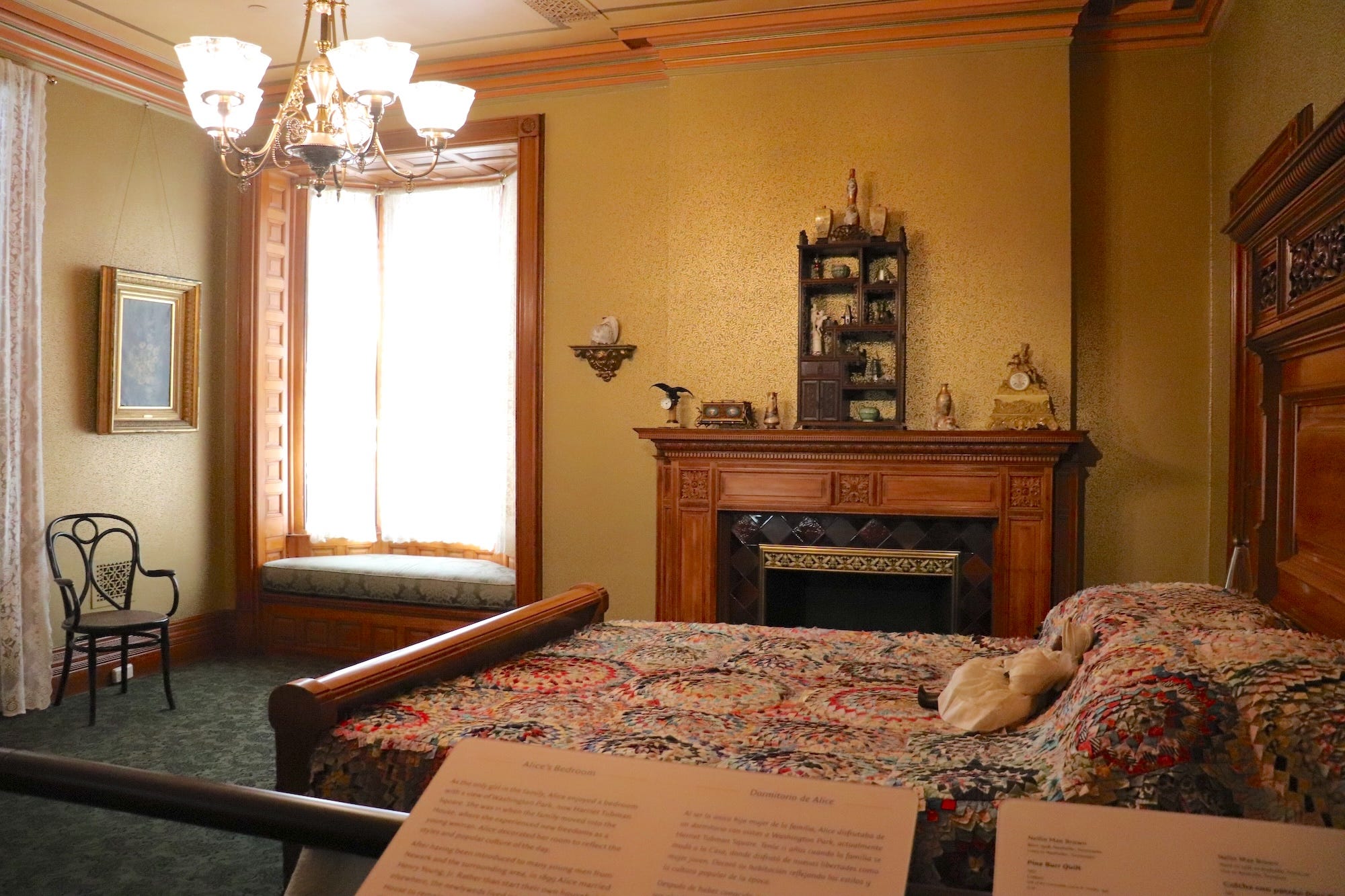
Talia Lakritz/Business Insider
Ballantine Young lived in this room until she married in 1899. She and her husband then moved upstairs to the third floor.
The museum added an African-American quilt donated by Lonna R. Hooks, New Jersey’s first Black Secretary of State, to Ballantine Young’s bed.
Jeannette Ballantine’s boudoir served as her “command center,” Hopwood said.

Talia Lakritz/Business Insider
Like many wealthy wives in the Gilded Age, Jeannette Ballantine was in charge of running the household. She used the boudoir to plan dinner party menus, sift through calling cards left by guests, and write letters, among other tasks typical of a high-society hostess.
The Ballantines shared a bedroom instead of having separate spaces, which was unusual in the Gilded Age.
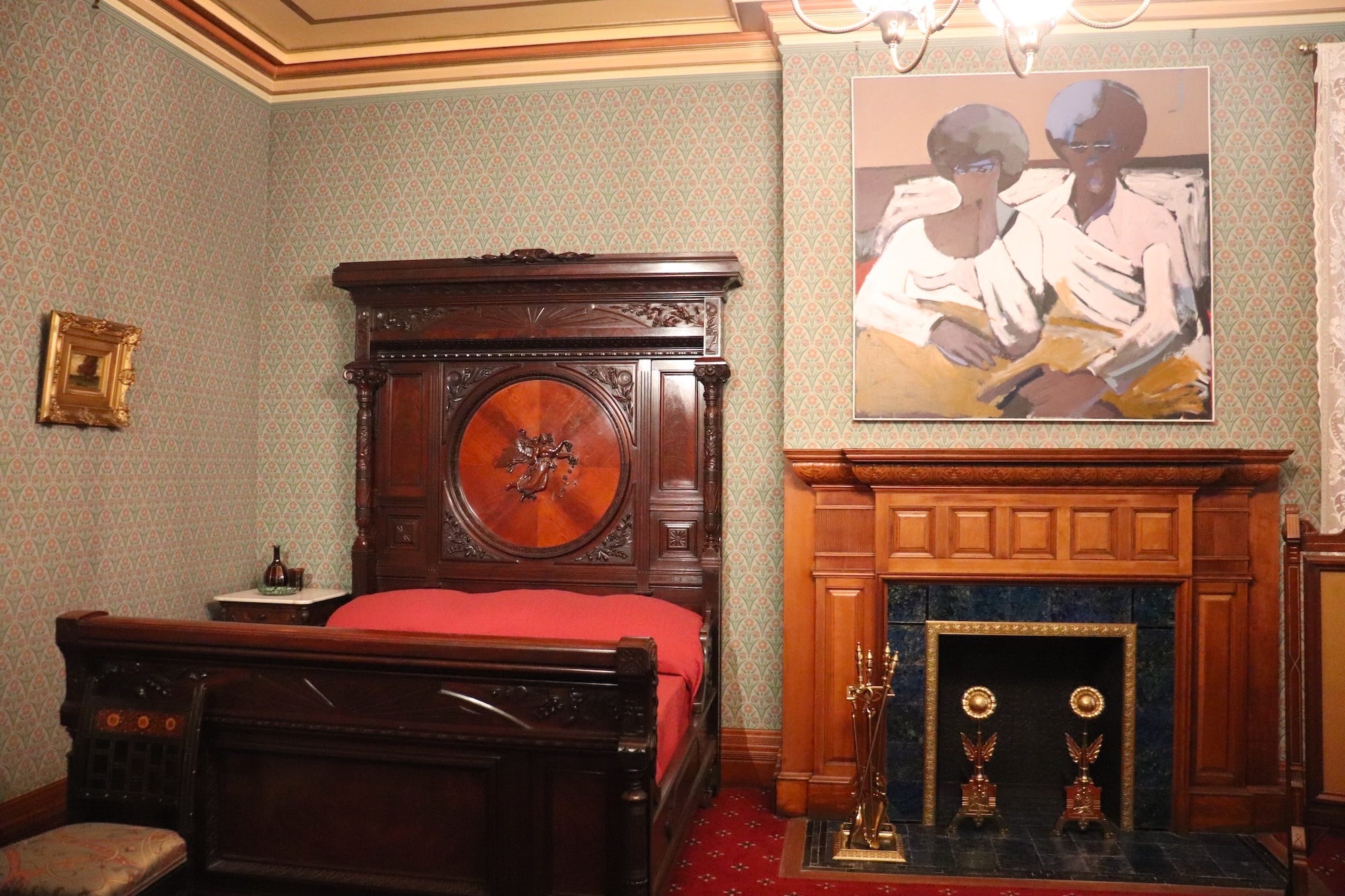
Talia Lakritz/Business Insider
The Ballantines’ bedroom featured another contemporary art piece, a 1971 painting by Newark artist Dmitri Wright titled “Black Couple in Bed Looking at TV.”
What was once an informal sitting room has been transformed into a space where visitors can play a game highlighting works by Black artists.
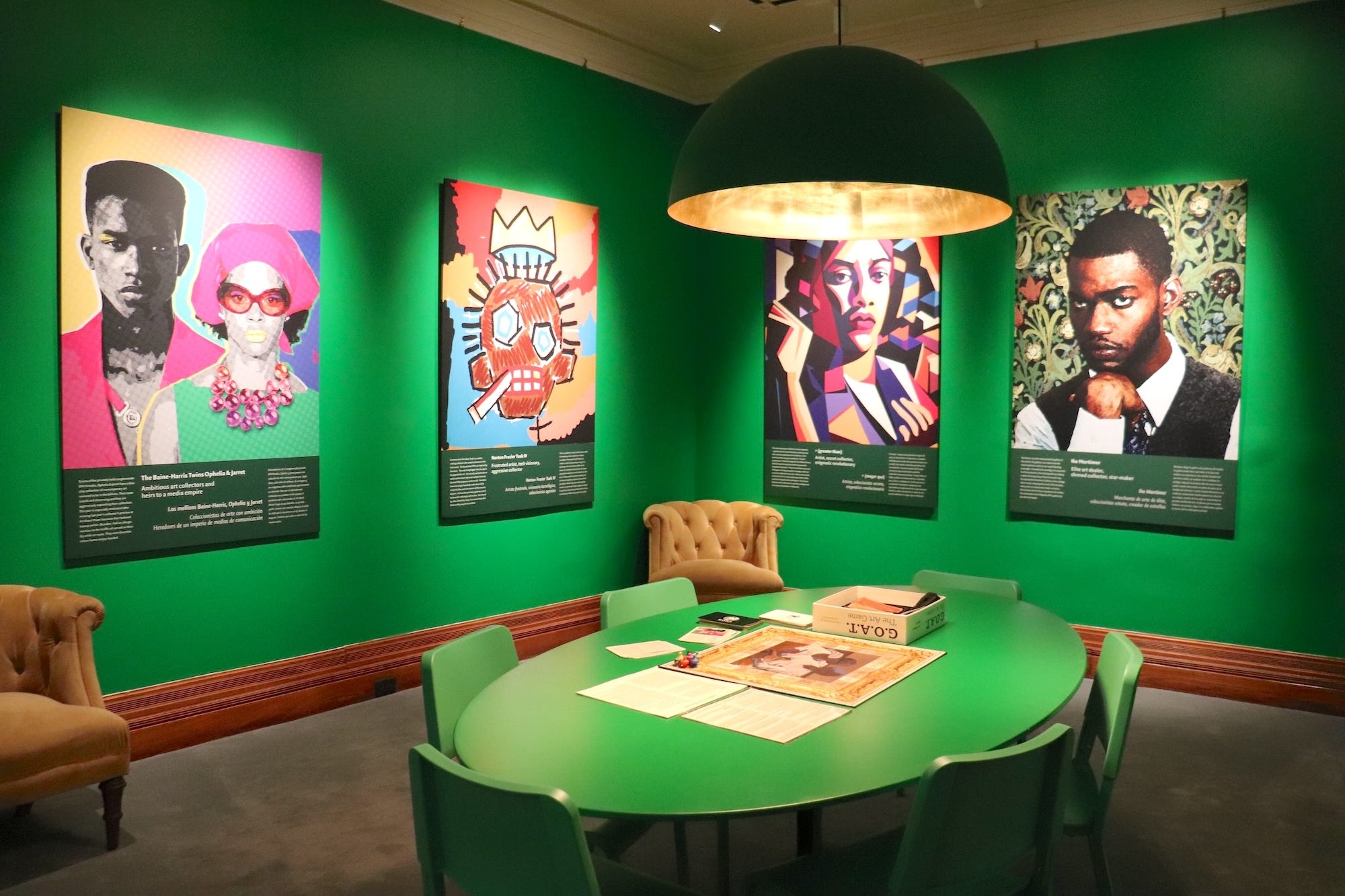
Talia Lakritz/Business Insider
To win G.O.A.T. The Art Game, players bid on pieces displayed at the Newark Museum of Art and call other players’ bluffs about fake paintings to amass the most valuable art collection.
“I was in here somewhat recently, and there was a huge group of people playing the game,” Hopwood said. “It was pretty involved.”
On my way back downstairs, an interactive exhibit invited people to reflect on their visit — another way curators are grounding Ballantine House in the modern world.
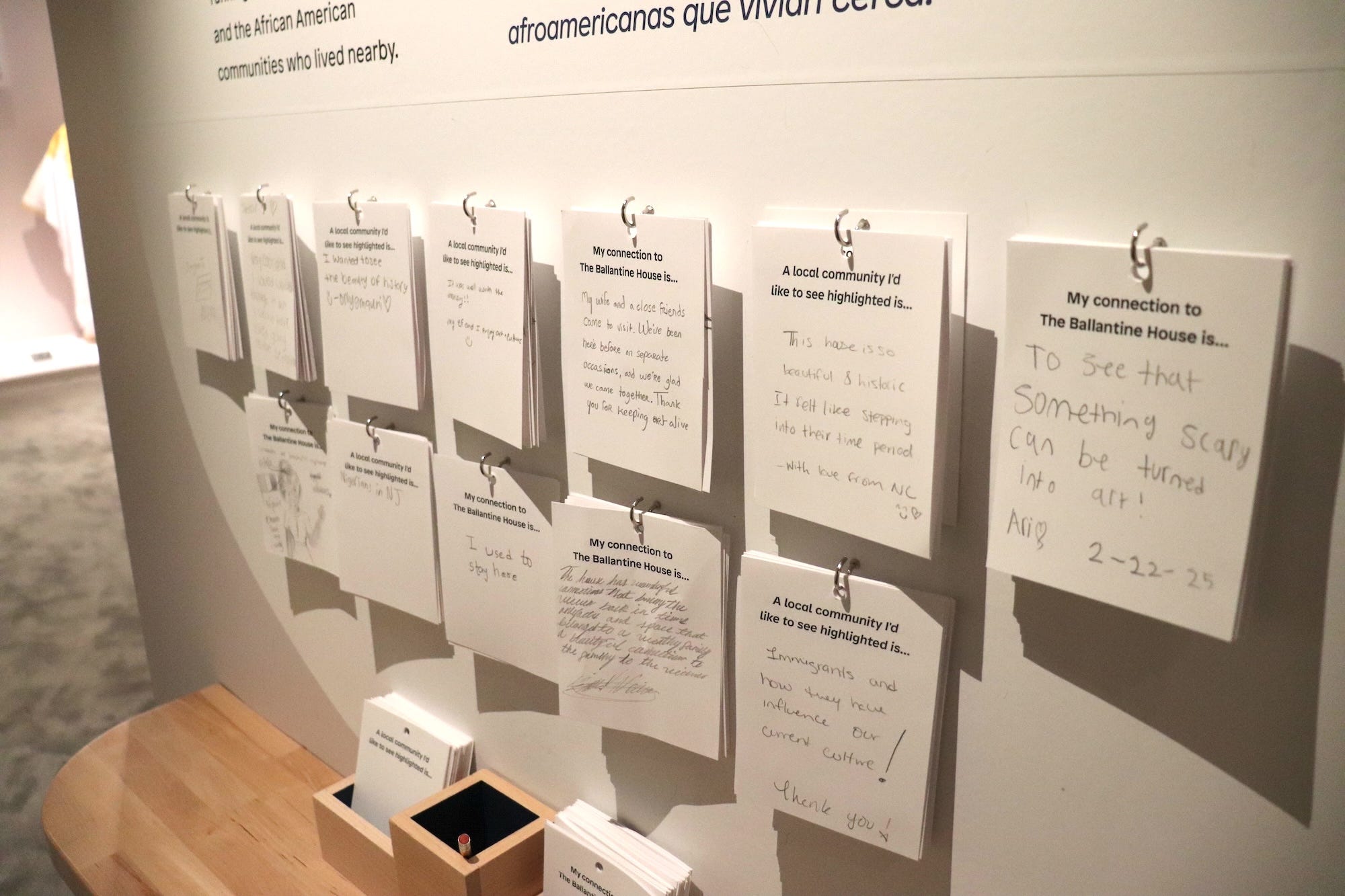
Talia Lakritz/Business Insider
During my visit to Ballantine House, a group of teenagers from a local summer camp excitedly roamed the halls, laughing and chatting as they admired the opulent rooms. Hopwood apologized for the noise, but I didn’t mind. It was just as the museum intended.
The post This 27-room Gilded Age mansion is more than just a display of wealth and power. Take a look inside Ballantine House. appeared first on Business Insider.




